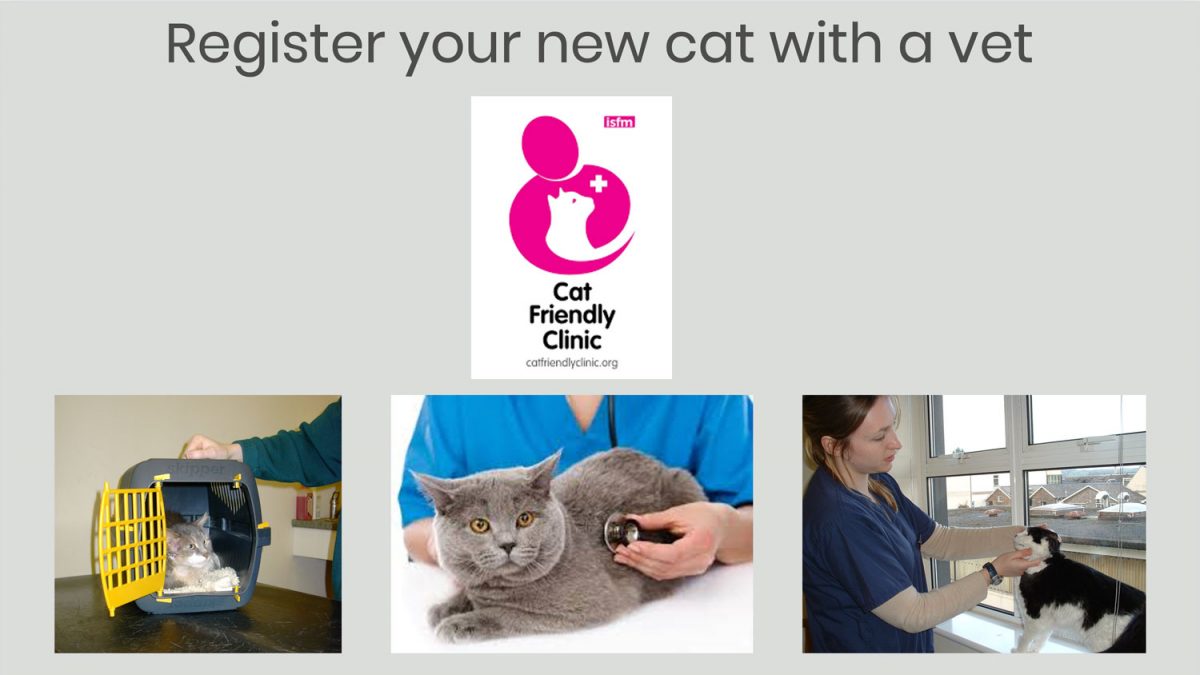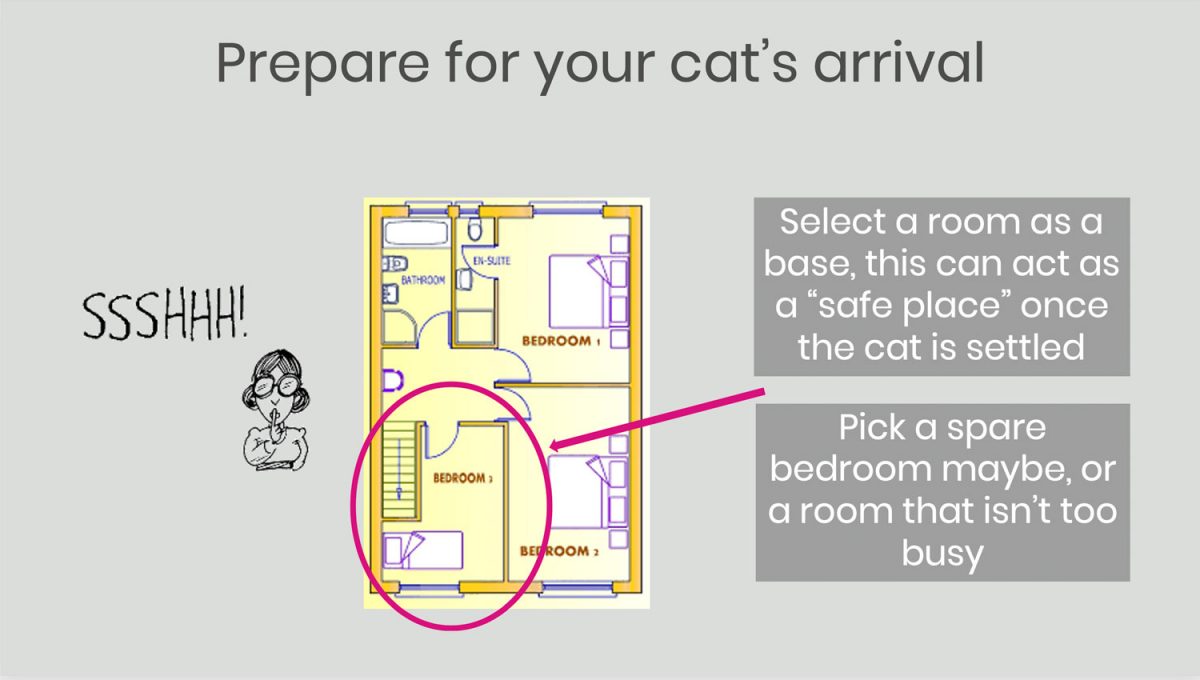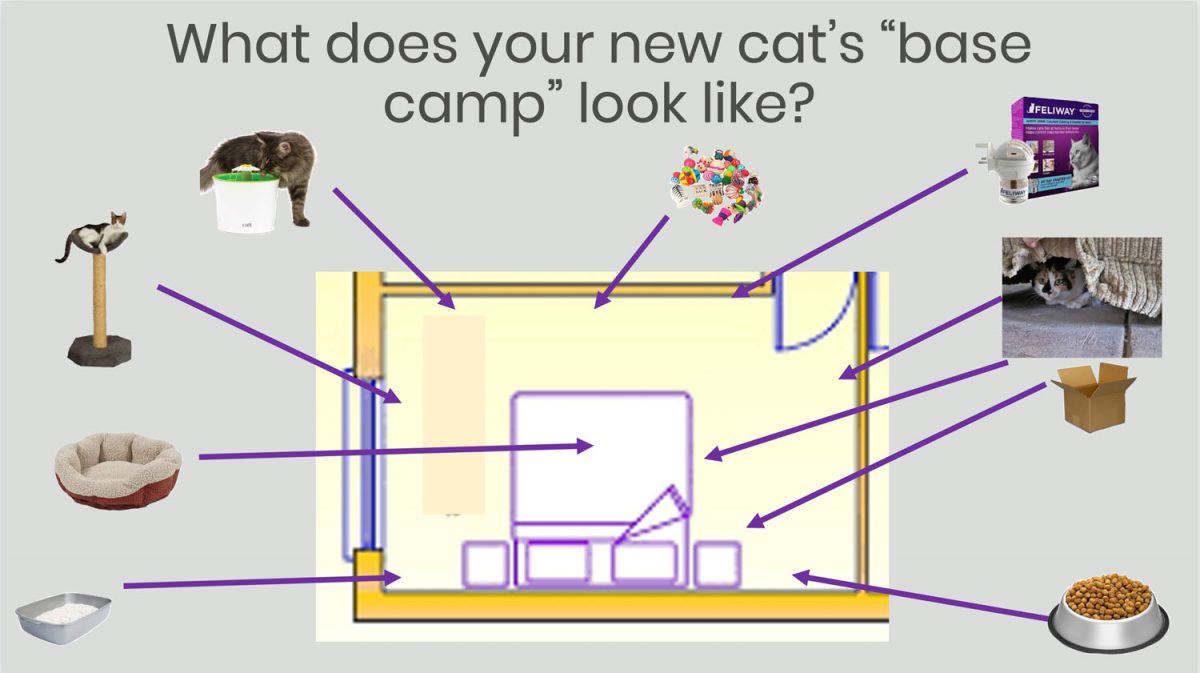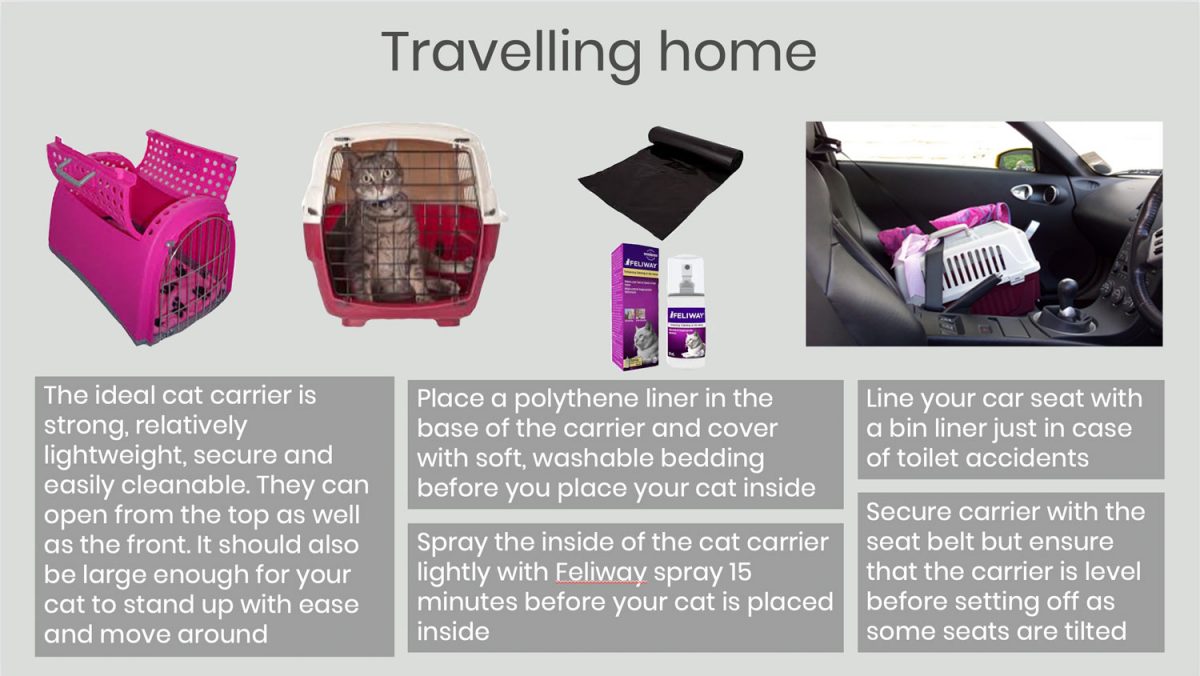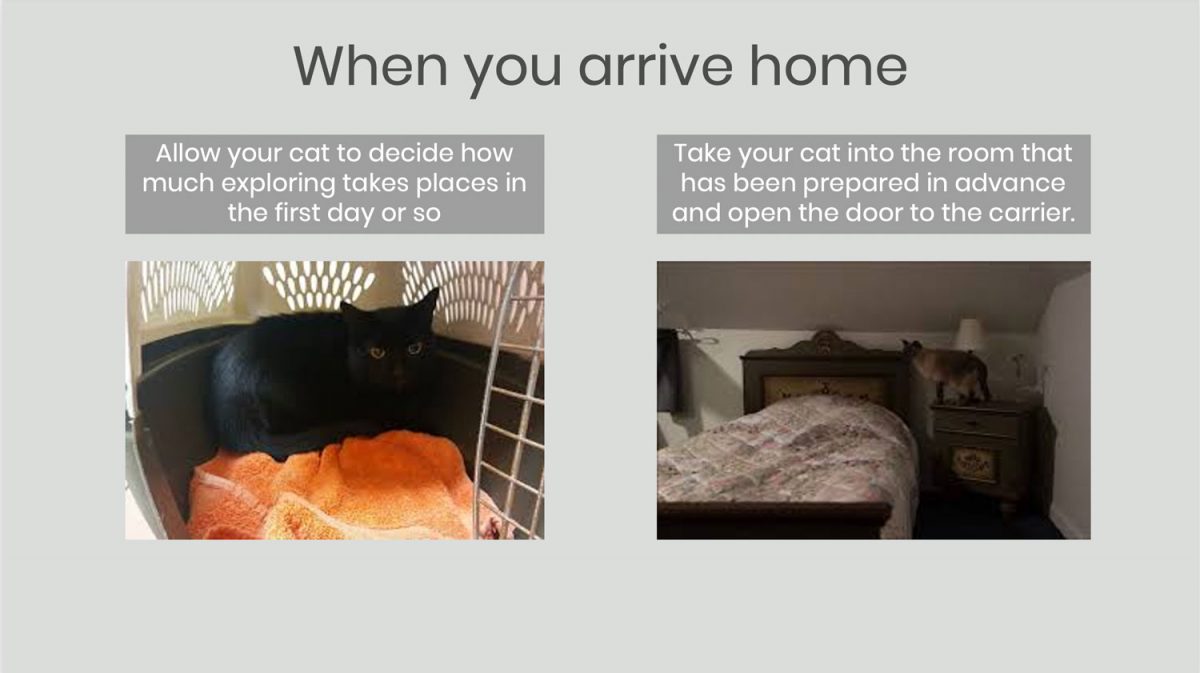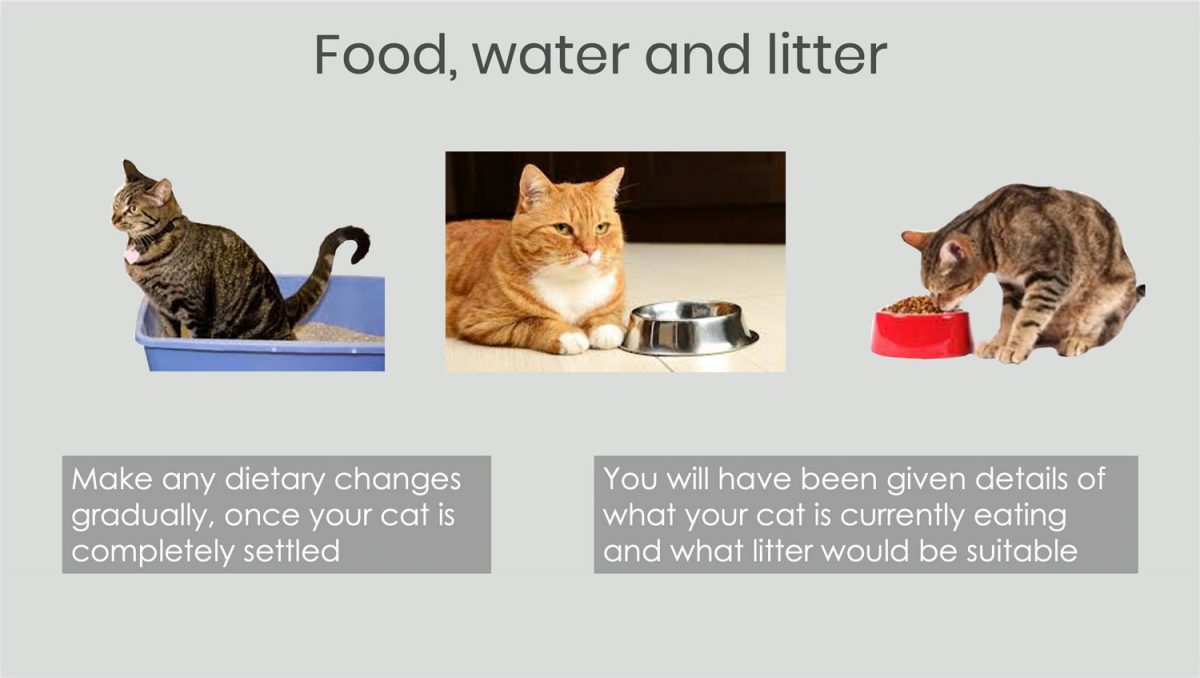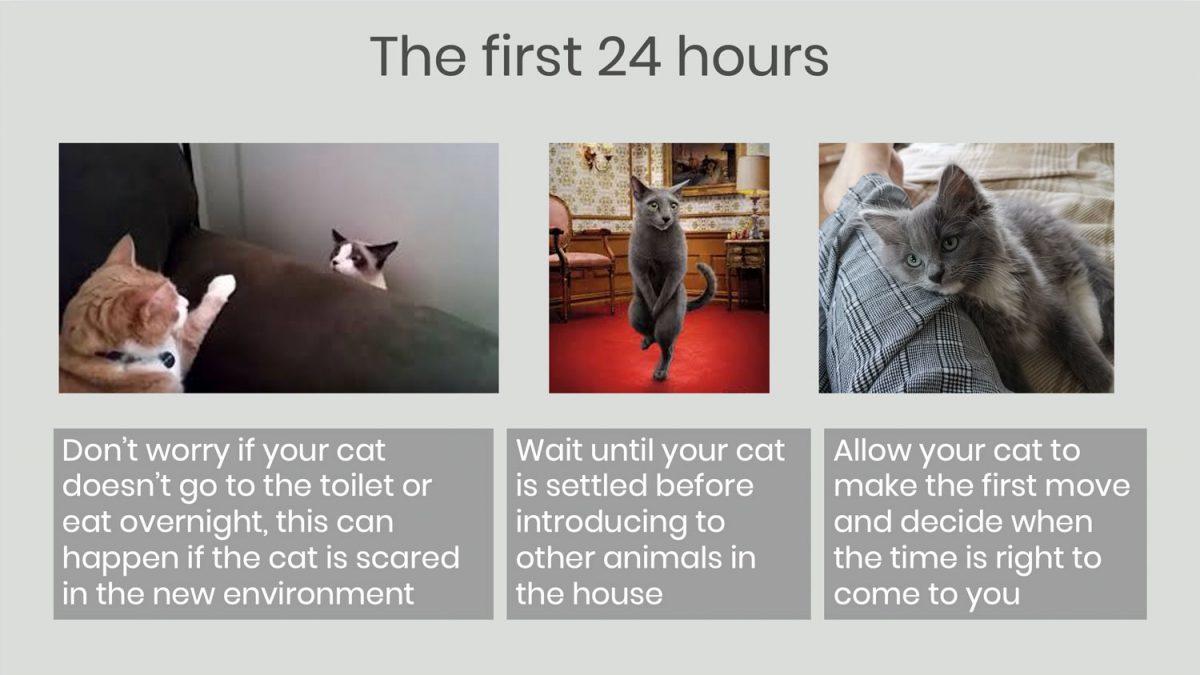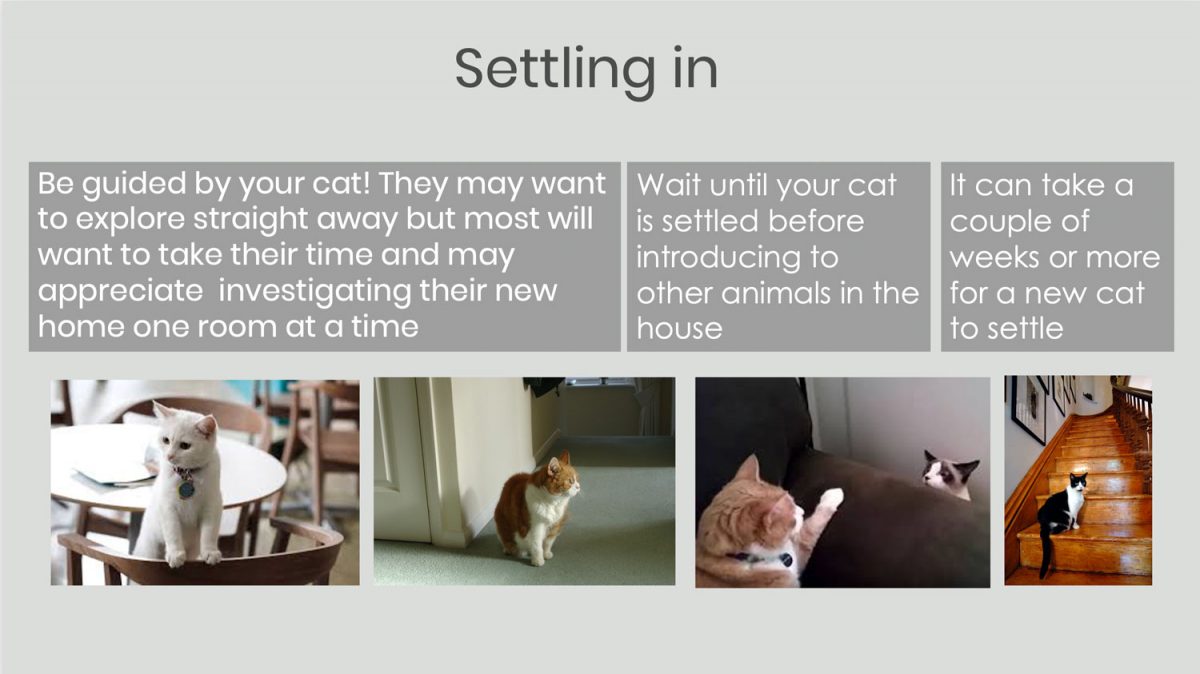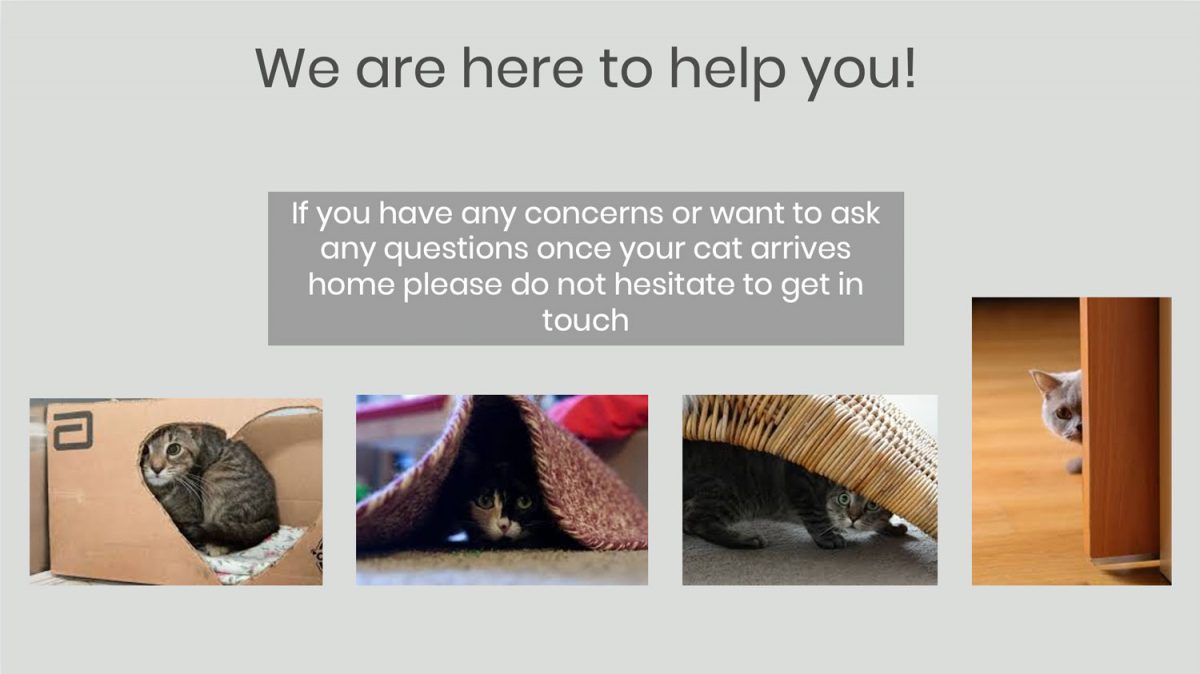 Outcome: Pet cats
Outcome: Pet cats
For cats that are suitable to be pets – finding a home with people
Adopt a proactive attitude rather than waiting for prospective adopters to come through the door of your homing centre; let your local community know you are there and encourage them to consider giving homes to the wonderful cats you have in your care and even have the homes prepared in advance, just waiting for the right cats. Have regular adoption events and be creative about how you advertise and what incentives you offer for people to come and visit and get excited about giving a cat a home.
Don’t put obstacles in the way of potential adopters!
It can be tempting to have rules about the suitability of certain people and their circumstances (such as proximity to a busy road or the presence of young children) which can mean that you might reject potential adopters. Any restrictions should be based on genuine risk assessment but, in most cases, cats can live a good life with most people who come forward to adopt one.
Make it easier to adopt
Have convenient opening times for the public. Arrange booked visits to minimise disruption and to make sure staff are available to spend time with potential adopters. Make your centre an attractive place to visit – it should be welcoming and appear clean and well organised.
| A UK study published in 2017 (Mortality due to trauma in cats attending veterinary practices in central and south-east England. McDonald JL, CLeasby IR, Brodbelt DC et al Journal Small Animal Practice 2017) found that there was no apparent association of road traffic accident-related death with urban environments or areas where there was increased human population density. The conclusion was that all geographical locations should be considered of equal risk. |
Review your policies to ensure they are not too restrictive and that they are in the cats’ interests. Useful things to check are:
- Requirement for landlord permission if the potential adopter is renting accommodation
- Checking whether adopters have a real understanding of how much it costs per year to keep a cat? A handout detailing typical costs of ownership could be useful
- Is the wording of your adoption paperwork legal and does it protect you, the adopter and the cat?
Match cats with owners and provide support
Use all the available information you have and keep in touch with new owners to see how everything has worked. If the matching didn’t work out, you can resolve the situation to the satisfaction of both the cat and the owner and learn from the experience.
Get to know each cat and establish what particular needs it has for a home
Information is key, using it to get an idea of how well a particular cat may cope living with people and what kind of home may be most suitable.
You have been collecting information about the cats from the beginning, including:
- Intake information – (sample questions owned, stray and abandoned cats)
- Veterinary notes
- Veterinary treatment
- Notes and observations from the carers
- The TLA colour assessment and how and when the cat’s colour changed during its stay
- Foster care notes and observation, where appropriate
This will start to give you an idea of how well this cat may cope living with people and what kind of home may be most suitable.
| If a cat has lived with cats previously and its intake information stated that it didn’t get on with the other cats then it might be wise to give this cat a home of its own, without others to compete with. If it lived happily with a dog, then any potential home with a dog can be considered – of course, this does depend on the dog’s response too! When you do think about the profile of the ideal owner for any cat always remember that nothing is perfect, so be flexible about what you will accept as the right person if the ideal is not forthcoming. Always remember that the cats in your care need a home and you want to do your very best to ensure that everyone that comes to adopt a cat actually leaves with one or remains on a waiting list if you don’t have anything suitable at the time. |
The adoption interview
Every person or family that comes through the door is a potential adopter and they should be treated with kindness and respect. Part of the adoption process is the interview. The prospective adopters may have either completed a questionnaire (see the adoption paperwork) or you have agreed to complete it together during the course of a conversation. Your role is to ensure the cat or cats you recommend that they view will be a good match for them and that the prospective adopters fully appreciate the responsibility (time, money, holiday provisions, veterinary care, providing the right environment) of taking on a pet cat.
| Do the best you can
You may be reading some of the content on this page and thinking ‘I can’t do that’ or ‘I wish it was that simple!’ We know that life is complicated and when you are dealing with cats (and people) nothing is black and white. Following Cat Friendly principles is all about doing the very best you can under difficult circumstances. So, if you read something and think ‘impossible!’ then maybe consider what you could do instead that would have a positive impact. We know we cannot achieve perfection as it isn’t a perfect world. Be pragmatic and be satisfied with ‘good enough’ when the ideal seems impossible. |
Adoption interviews should be:
- Informal but respectful and professional
- Informative – you may want to give lots of information at the time but very little will be taken in during that one conversation so make sure you have leaflets or handouts available to reinforce your messages
- Private – away from the activity in the homing centre and away from the cats to avoid distraction
- Fun! So make sure you have videos or pictures available of the cats you feel would be a good match so nobody forgets why you are having this discussion!
- Fun for children too, so have some colouring books or special games for them to play if they get bored, overexcited or start to distract the adults
Where you can:
- Find out a little more about the potential owners’ expectations and what a new pet cat means to them
- Find out which particular cat, if any, they are interested in
- Explain how much it costs, on average, to look after a pet cat
If you feel their expectations are unrealistic you may need to explain that:
- Not all cats want to sit on their owners’ laps or play constantly with children. It may be helpful to produce a small leaflet about what a cat is or direct them to information if you have a website or can recommend another
- Cats are not small dogs and that every cat is different. They should always be allowed to initiate contact with people
- Cats should have plenty of opportunity to express their natural behaviours (eg, climbing, stalking, scratching, hiding etc)
| A leaflet for prospective owners called “what is a cat?” can be a useful tool, here is an example leaflet. |
| The People’s Dispensary for Sick Animals (PDSA) estimates that in the UK the minimum cost of owning a cat is £70 per month, with ‘set up’ costs when they first arrive of around £250 (2018 PDSA Animal Wellbeing (PAW) Report). You may be able to find equivalent information for your own country that would be helpful for new owners. |
It may be helpful to revisit the short communication skills presentation to remind you of the best way to have a good conversation with the prospective adopters.
If you have any concerns about the suitability of anyone to have any cat it is important to consider your reservations rationally and maybe discuss with another member of the team. Sometimes reservations represent a prejudice you may have developed as a result of a previous bad experience. Don’t let any potential home for a cat disappear without fully exploring the potential of any offer properly and openly.
What if the owner wants a particular cat that you don’t feel will be suitable?
Sometimes a potential adopter will come forward having seen a particular cat on your website or visit a veterinarian. However, with the information you have gleaned about that cat during its stay, you really don’t feel that this is a good match. You should, however, be persistent and honest about why you don’t feel that would be the right cat but focus on ‘selling’ the attributes of another cat (or choice of cats) that you think would be more suitable.
Rather than let everyone see all the cats initially, speak to them and do the paperwork first. Once you have an idea of their family, home environment and expectations of a pet cat then you will be perfectly placed to encourage selection from a few you can show them, any of which might be suitable.
| If you have 2 or 3 cats in mind for a particular person or family, don’t forget to prioritise the cats that you feel will make good pets but are not coping well with confinement (and therefore may be red). However, red cats can represent ‘hard sells’ as you have to explain that their hiding or depressed behaviour is not a true reflection, in your opinion, of how they will behave in a home. It is just that they need help. If the adopter appears unconvinced and really wants the green cat then don’t lose the potential home by pushing too hard for them to take the other one. A home for a green cat is still a great result! Green cats should be easy to home to just about anyone. |
Pre-adoption ‘home-checks’?
Many organisations will carry out a pre-adoption home-check, but this is a significant drain on resources and delays cats from going to their homes. If you have always done these and rejected potential homes based on some serious and significant factors that may have caused harm to a cat then you may wish to continue them. If, however, you have either not rejected a home during a pre-adoption visit or done so on the basis of a personal preference regarding what represents a ‘good’ cat home, then you may wish to consider putting your staff or volunteers’ time to better use. You can use Google maps to see the property, ask for photos of the inside to see the space available and get proof of ownership or tenancy and landlord permission via documentation. Allowing potential adopters a self-assessment tool can also be helpful to guide them in making sure they have thought about what it means to take on a cat. For experienced owners, you can also ask for details of their veterinarian for a reference. You can even agree to visit the new owner after the adoption process if you have any concerns. This post-homing visit can be very reassuring to new owners who may need some additional support or guidance.
Support and guidance for new owners
Some new owners need a little hand-holding during the first few weeks as they often make the assumption that the cat will be extremely grateful to be in a loving home and transform into the ideal pet almost instantly. If you manage the owner’s expectations, they are less likely to be disappointed if their new cat remains hidden for the first week. Cats are best left to adjust to their new circumstances in their own time. Here is some information about how you might discuss the topic before the owner leaves with their new cat. You may want to adapt this to your own circumstances so that you can give them a handout or talk it through with them first.
How to settle your new cat into your home




